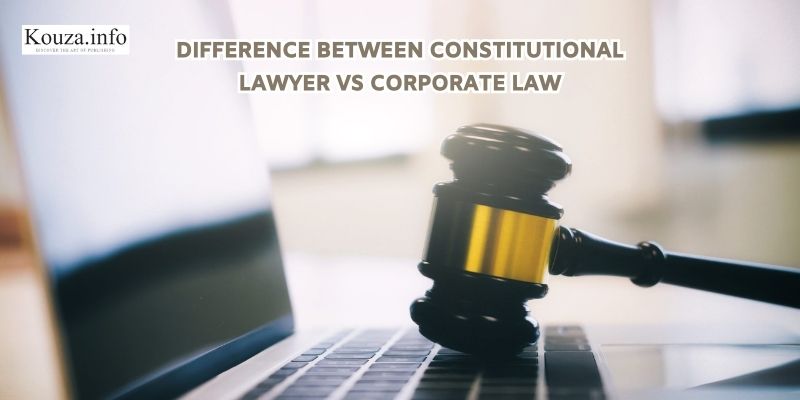Understanding No-Fault Divorce and How it Works

In today’s society, no-fault divorce has become a norm. This means that couples no longer have to go through a long, drawn-out process to get divorced. Instead, they can simply declare their marriage dissolved in court and move on with their lives. To go deeper into this topic, kouza invites you to check out our article!
What is No-Fault Divorce?
No-fault divorce is a type of divorce in which neither spouse is required to prove that the other spouse has done something wrong in order to obtain a divorce. In a no-fault divorce, the spouse who files for divorce simply states that the marriage has irretrievably broken down and that there is no chance of reconciliation.
The concept of no-fault divorce originated in the United States in the mid-twentieth century as a way to simplify and streamline the divorce process. Prior to the advent of no-fault divorce, couples seeking a divorce were often required to prove that one spouse had committed adultery, abandonment, or other grounds for divorce. This process could be time-consuming, expensive, and emotionally draining for both parties.

Today, many states in the United States and countries around the world allow for no-fault divorce. The specific laws and procedures for obtaining a no-fault divorce can vary by jurisdiction, but in general, the process involves filing a petition for divorce with the court, serving the petition on the other spouse, and then attending a court hearing to finalize the divorce. Here are the details:
The legal process of No-Fault Divorce
The legal process for obtaining a no-fault divorce can vary depending on the jurisdiction, but generally follows a similar pattern:
- Filing the petition: The first step in the process is for one spouse to file a petition for divorce with the court. The petition typically includes basic information about the parties and their marriage, as well as a statement that the marriage has irretrievably broken down.
- Serving the petition: Once the petition is filed, it must be served on the other spouse. This can be done through personal service (where a process server or law enforcement officer delivers the papers to the spouse in person) or through mail, depending on the jurisdiction.
- Response: After being served with the petition, the other spouse has a certain amount of time (usually 30 days) to file a response. The response typically includes a reply to the allegations in the petition, as well as any counterclaims or requests for relief.
- Discovery: If the divorce is contested (meaning that the parties do not agree on all issues), both sides may engage in discovery to gather information about the other’s assets, income, and other relevant information.
- Settlement negotiations: The parties may engage in settlement negotiations, either directly or through their attorneys, in an attempt to reach a mutually acceptable agreement on issues such as property division, spousal support, child custody, and child support.
- Court hearing: If the parties are unable to reach a settlement agreement, the case will proceed to a court hearing. At the hearing, both sides will present evidence and arguments in support of their positions, and the judge will make a decision on the contested issues.
- Final divorce decree: Once all issues are resolved, either through settlement or court decision, the court will issue a final divorce decree. This decree officially ends the marriage and sets out the terms of the divorce, including any agreements reached or court orders issued.
Benefits of No-Fault Divorce
No-fault divorce has a number of benefits for spouses who are seeking to end their marriage. Some of the main advantages are as follows:
- Reducing conflict: With no-fault divorce, there is no need for one spouse to prove that the other is at fault for the breakdown of the marriage. This can reduce conflict and make the divorce process less acrimonious.
- Streamlining the process: Because no-fault divorce does not require proof of fault, it can be a simpler and faster process than fault-based divorce. Both sides can save time and money by doing this.
- Preserving privacy: With no need to prove fault, there is less opportunity for personal and potentially embarrassing details to be aired in court. This can help to preserve the privacy and dignity of both parties.
- Encouraging cooperation: Without the need to prove fault, there is less incentive for one spouse to dig up dirt on the other or to engage in other tactics that can prolong and exacerbate the divorce process. This can encourage both parties to work together to reach a mutually acceptable agreement.
- Protecting children: No-fault divorce can also help to protect children from the negative effects of divorce. Without the need to prove fault, there is less opportunity for children to be caught in the middle of a contentious dispute between their parents.

Child custody and support in a No-Fault Divorce
In a no-fault divorce, the court will usually make a determination about child custody based on what is in the best interests of the child. This may involve considering factors such as each parent’s ability to provide for the child’s physical and emotional needs, the child’s relationship with each parent, and any special needs or circumstances that the child may have.
In most jurisdictions, child support is calculated based on a formula that takes into account each parent’s income, the number of children involved, and other factors such as childcare and health insurance costs. The goal is to ensure that both parents contribute to the financial support of their children in proportion to their ability to pay.
In some cases, parents may agree to joint custody, in which both parents share equal responsibility for the care and upbringing of their children. This can be a good option when parents are able to work together and maintain a positive co-parenting relationship.
When resolving disputes over child support and possession, parents may in some instances decide to use mediation as a tool. Mediation can be a less adversarial and more collaborative process than going to court, and can help parents to reach a mutually acceptable agreement that meets the needs of their children.
Final Thoughts
Overall, no-fault divorce can be a more humane, efficient, and effective way to end a marriage, particularly in cases where both parties are able to work together to reach a mutually acceptable agreement.
Conclusion: So above is the Understanding No-Fault Divorce and How it Works article. Hopefully with this article you can help you in life, always follow and read our good articles on the website: kouza.info



